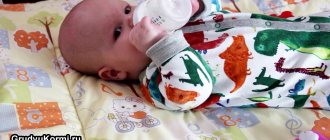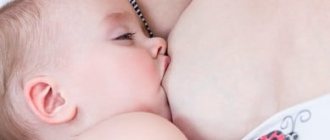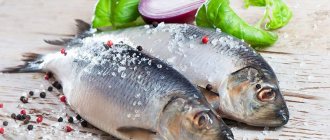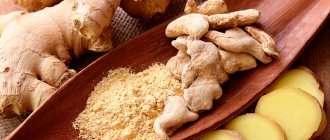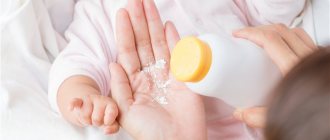Release forms of "Nurofen"
Regardless of the form of the drug, the active ingredient is ibuprofen. The substance stabilizes the mechanisms of heat production and heat transfer, has an anesthetic effect and reduces inflammatory reactions. The trademark belongs to a UK pharmaceutical company. The drug is sold in the following forms:
- Tablets 200 mg. Intended for children over 6 years old.
- Capsules of 200 and 400 mg. Prescribed for children over 12 years of age.
- Liquid form is a suspension with various flavoring additives. 5 ml contains 100 mg of active substance. The product is intended for use by children from 3 months.
- Rectal suppositories. Approved for the treatment of children over 3 months. In 1 piece contains 60 mg of substance.
In pediatrics, syrup and suppositories are more often prescribed (children like the taste of syrup, and suppositories allow them to avoid negative effects on internal organs, in contrast to oral medication, since the active substance immediately enters the bloodstream from the mucous membrane). Rectal use of the product is advisable for vomiting, intolerance to components, and allergic reactions.
How long should a nursing mother wait?
Alcohol during breastfeeding has a negative effect on the body of a growing person. Infants are vulnerable, they are completely dependent on their mother, who needs to adhere to a strict diet and also give up alcohol. If you were unable to abstain, you need to find out whether alcohol passes into breast milk and after how long you can start the procedure.
The final period of breakdown of alcohol will depend on the speed and quality of metabolic processes in the mother’s body. The final time is strictly individual.
Alcohol will be completely removed from the milk of a nursing mother on average after 6 hours. This time may fluctuate in one direction or the other. But doctors recommend waiting at least 5 hours after drinking alcohol. Only after this can the baby be applied to the breast.
If you cannot maintain the specified time, you can use this advice: milk after alcohol should be expressed, placed in a clean enamel container and heated. Do not bring to a boil so as not to spoil the natural product and deprive it of valuable substances. Afterwards, the milk should be poured into a bottle, allowed to cool to body temperature, and given to the child. Alcohol disappears under the influence of elevated temperatures, and the liquid becomes practically harmless to the crumbs.
Many mothers make a basic feeding mistake. They express the first portion of liquid. Do not forget that all metabolic processes in the body also affect biological fluids. These include milk. This product will be safe only when there are no traces of alcohol left in the mother’s body.
Features of the drug use
The accumulation of excess heat during viral and bacterial infections is a natural protective reaction of the body. An increase in temperature is associated with activation of the immune system, which creates unfavorable conditions for the development of pathogens. For this reason, you should not bring down the temperature as soon as it appears. Parents are often concerned about the mechanism of action and features of taking the drug:
- The active component interacts with mediators of pain and hyperthermic reaction (prostaglandins) and has a rapid targeted effect.
- An antipyretic can be given to children at temperatures above +38.5…+39°C. However, in pathologies accompanied by pain, taking the drug is justified at lower levels. For otitis and sore throat, teething, the medicine not only stabilizes body temperature, but also additionally alleviates the child’s condition, reducing the severity of pain.
- Features such as the duration of therapy and how many days Nurofen can be given to a child depend on the clinical picture of the disease. Without agreement with the pediatrician, the medicine should not be taken for more than 3 days.
Recommendations for how long after which Nurofen can be given to a child are the same for suspension and tablets. The medicine can be given again after 6 or 8 hours. This period of time corresponds to the duration of action of the drug. Reducing the required interval will lead to an increase in the daily dose of the substance. This will increase the risk of developing systemic disorders in the body.
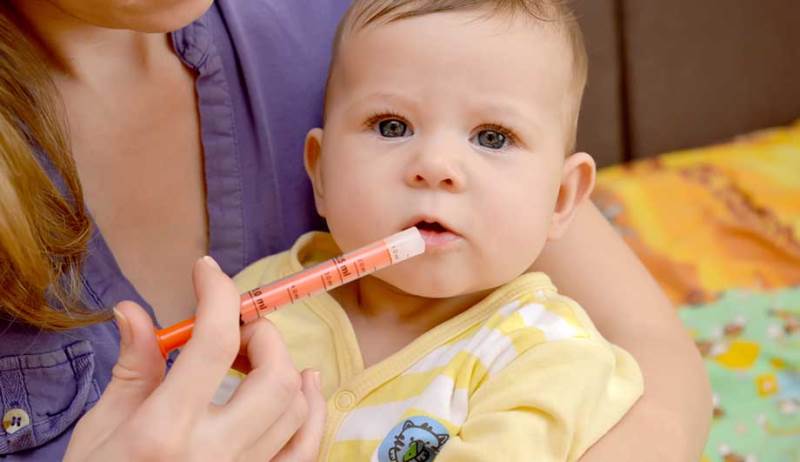
Nurofen: how often can you give it to your child?
Nurofen is one of the most effective drugs used in pediatrics to reduce fever or pain. The drug is characterized by rapid action and high safety, however, despite the small number of side effects, it cannot be used uncontrolled.
Therefore, you need to know how often you can give Nurofen to your child so as not to harm it.
The drug is a non-steroidal anti-inflammatory drug intended for symptomatic therapy.
The medicine relieves fever well, reduces the intensity of inflammatory diseases, and eliminates associated pain.
The active component of Nurofen is ibuprofen, a derivative of propionic acid. The mechanism of action is to suppress the activity of COX enzymes and, with their participation, form mediators of inflammatory reactions - prostaglandins.
In addition, ibuprofen prevents platelet aggregation, resulting in the formation of blood clots. The analgesic effect is most pronounced in the treatment of inflammatory diseases. The effect of a single dosage lasts for 8 hours.
The drug for children is available in several versions: in the form of an oral suspension (with several flavors), rectal suppositories.
Nurofen is used in pediatrics for:
- To reduce temperature during acute respiratory infections, influenza, childhood infections, and other infectious and inflammatory pathologies, after vaccination.
- For pain relief: for mild or moderate pain of various localizations (including pain in the head, muscles, teething, migraine, neuralgia, otitis media, sore throat, after sprains, etc.).
Suspension and suppositories can be used in the treatment of babies from 3 months of age.
Features of use in children
The drug provides excellent relief from high fever and pain, but does not affect the cause of the disease. Therefore, Nurofen is recommended for short-term use. In order to prevent the progression of the disease, you should definitely check with your pediatrician how many days you can give your child Nurofen for fever or pain.
Application by temperature
The dosage for fever depends on the age and weight of the baby. When calculating the required amount, it should be taken into account that the daily norm is 30 mg of ibuprofen per 1 kg of body weight.
Suspension containing 100 mg ibuprofen in 5 ml:
- 3-6 months (weight 5-4.6 kg) single dosage 2.5 ml, frequency of administration – 3 times, daily maximum – 7.5 ml
- 6-12 months (7.7-9 kg): single dose - 2.5 ml, frequency of administration - 3-4 times, per day - no more than 10 ml
- 12 months - 3 years (10-16 kg): one-time - 5 ml, multiplicity - 3 times, per day - maximum 15 ml
- 4-6 l. (17-20 kg): one-time – 7.5 ml, multiplicity – 3 rubles, daily. maximum – 22.5 ml
- 7-9 l. (weight 21-30 kg): single dose - 10 ml, dose - 3 times a day, per day - 30 ml
- 10-12 l. (31-40 kg): one-time dose – 15 ml, dose – 3 times a day, per day – no more than 45 ml.
Suppositories
The drug is used for children from 3 months to 2 years. Intended for rectal administration. Used if the child cannot take the suspension or vomits frequently.
Recommended dosages:
- 3-9 months (6-8 kg): 1 suppository (60 mg) up to 3 times a day. The maximum total dosage is 3 suppositories.
- 9 months - 2 years (8-12 kg): 1 candle up to 4 rubles. per day. The maximum permissible dosage is 4 suppositories.
How soon can Nurofen be given to children again?
Regardless of the dosage form chosen (suppositories or syrup), it is recommended to use Nurofen at 6-8 hour intervals.
If the effect of the drug was not strong enough, and after 2-3 hours the child’s temperature rose again or pain appeared, then you should try to eliminate them using other means.
For example, if the patient does not have allergies, then you can wipe him with water and vinegar.
If traditional methods do not help, then parents may be tempted to give the medicine again. But you need to remember that using ibuprofen too often can lead to an overdose of the drug, which will lead to complications.
How many times a day can Nurofen be given?
It is recommended to give the drug 3-4 times a day, depending on the dosage, which is calculated based on the age and weight of the patient. It is imperative to observe a 6-8 hour break between doses.
When treating a small patient, it is important not only to know after what time Nurofen can be given to a child during the day, but also the duration of the course. Like many NSAIDs, the drug should not be used for a long time, as it may cause increased side effects and an overdose. The maximum duration of therapy with Nurofen is 3 days!
At the same time, you need to remember that if within 24 hours after Nurofen the baby is 3-5 months old. does not improve (or for a child over 6 months old for 3 days), then you need to stop giving the medicine and be sure to seek medical help.
This article was written by specialists with medical education from the lekhar.ru team. You can read the original instructions on the manufacturer’s website: Nurofen.
Source: https://lekhar.ru/lekarstva/obezbolivajushhie-preparaty/prijom-nurofena/
Dosages
How many times a day you can give Nurofen to a child depends on the severity of the symptoms and the characteristics of the baby’s body. In some cases, the doctor may prescribe 1 or 2 doses of the drug during the day, but no more than 3-4 times in 24 hours, depending on the form of release.
A single dose is calculated taking into account body weight and age. The maximum daily dose is no more than 30 mg per kilogram of body; general recommendations for the drug in syrup form are as follows:
- Children from 3 months to 1 year weighing from 5 to 9 kg are allowed to take 2.5 ml. At the same time, the maximum number of doses per day differs: up to 6 months is no more than 3 times, over six months 4 doses are allowed (in agreement with the doctor).
- For children over 1 year old with a body weight of more than 10 kg, the dosage is increased to 5 ml (no more than 3 times a day).
- A volume of 7.5 ml per 1 dose is allowed for children over 4 years of age with a weight of 17 kg (up to 3 times a day).
- If you weigh more than 21 kg and are over 7 years old, 10 ml is prescribed. The number of receptions is no more than 3.
- The maximum single dose of 15 ml is allowed for children aged 10 to 12 years with a body weight of more than 31 kg (no more than 3 times a day).
For ease of use, the baby syrup is equipped with a measuring syringe, which is tightly inserted into the neck of the bottle. The container must be carefully turned over or tilted, then draw the medicine to the required level. The bottle returns to its original position, after which the syringe is removed.
In case of increased sensitivity of the digestive tract, it is recommended to combine the drug with food.
For rectal administration, the recommendations for how many hours after which the medicine can be given do not differ: depending on the age, Nurofen suppositories are reused every 6 or 8 hours, 1 pc. Children under 9 months - no more than 3 times a day, over 9 months and weighing more than 8 kg - up to 4 times.
Treatment with 200 mg tablets is possible only with a body weight exceeding 20 kg. Children over 6 years old are prescribed 3 to 4 doses per day, 1 tablet.
In each case, the exact dosage must be agreed with the pediatrician.
How quickly does alcohol penetrate milk?
A young nursing mother should also find out how long it takes for alcohol to pass into breast milk. The maximum indicator will be reached depending on the time of its use:
- On an empty stomach – after 30–50 minutes;
- During or after meals - after 45–90 minutes.
This can be explained quite simply, since the received dose of alcohol quickly penetrates the blood of a person who has not yet eaten, and therefore the processing and distribution of alcohol-containing components takes 2-3 times less time than under other conditions (when drinking alcohol on an empty stomach).
Alcohol can destroy a small body. If mommy uses it constantly, then it often enters the milk. When weaning, the baby feels a lack of alcohol vapors and those substances contained in alcohol. That is why he becomes capricious, refuses to eat other food or sleep. There is no guarantee that such a child will not become an alcoholic in the future.
Analogues of Nurofen for children
An analogue of Nurofen in terms of the active substance is Ibuprofen. The drug is available in the form of syrup and suppositories. The advantage of the analogue is lower cost. The average price of Nurofen syrup is 180 rubles, Ibuprofen in the same form is 100 rubles.
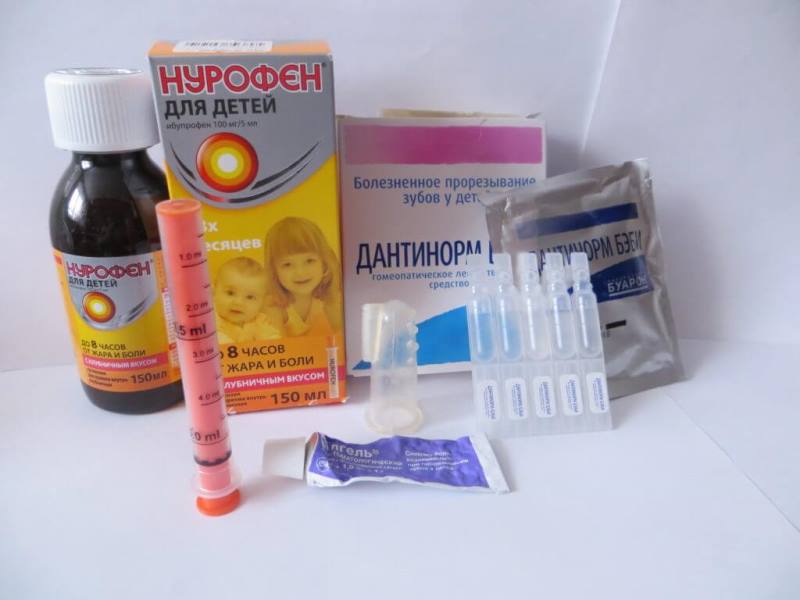
Another ibuprofen-based drug for children is Advil. The German-made suspension contains 100 mg of active substance per 5 ml.
Paracetamol-based medications are also used in pediatrics:
- Paracetamol syrup. The drug is made in Russia. 5 ml contains 120 mg of substance. The average cost is 100 rubles.
- Panadol. Medicine from a French brand. The suspension contains 120 mg of the substance per 5 ml. The cost of packaging is about 90 rubles. The drug is also available in the form of suppositories.
- Efferalgan. Produced in France. 1 ml of syrup contains 30 mg of paracetamol. A form of the drug is available for rectal administration. The average cost is 100 rubles.
The selection of a medicine should be carried out under the supervision of the attending physician. Analogues may have different recommendations for taking and calculating the dosage of the medicine. Please refer to the included instructions.
Contraindications
The drug should not be taken if you are hypersensitive to any of the components. Other contraindications:
- Bleeding, erosive and ulcerative diseases of the digestive tract.
- Severe forms of liver and kidney pathologies.
- Heart failure after coronary artery bypass grafting.
- Impaired blood clotting, hemorrhagic diathesis.
- Fructose intolerance.
If you are taking other medications at the same time, you have allergies and bronchial asthma, or chronic diseases, you must coordinate treatment with your doctor to avoid the possible development of complications.
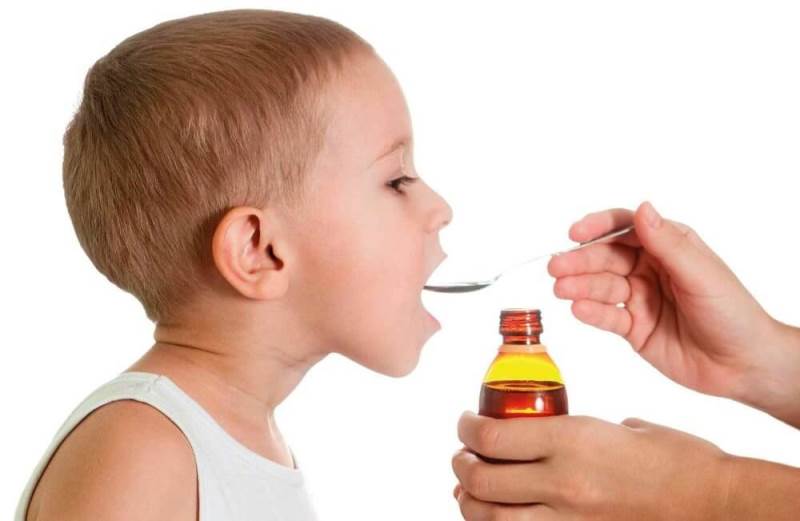
Let's sum it up
Nurofen is a remedy for relieving fever and pain that has a complex effect. The drug is not an antibiotic; it belongs to the group of non-steroidal anti-inflammatory drugs. Prescribed for impaired thermoregulation, incl. after vaccinations. Main features of the reception:
- The recommended frequency of administration is three times a day (10 mg per 1 kg of weight - the average recommended dosage);
- if you do not give a repeated dose in a row and do not exceed the dosage according to age, then the risk of adverse reactions is minimized;
- take into account the possible incompatibility of ibuprofen with a number of other substances.
If 4 hours after the first dose the temperature remains at the same level, it is recommended to give the child another drug: Panadol or something similar that corresponds to the age category.
If there is no positive effect of therapy, you should consult your doctor.
